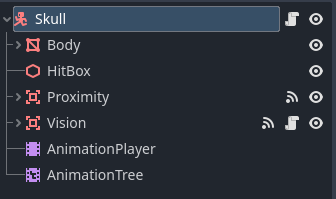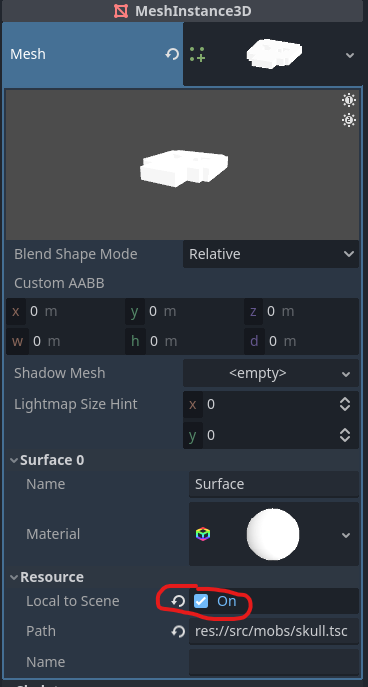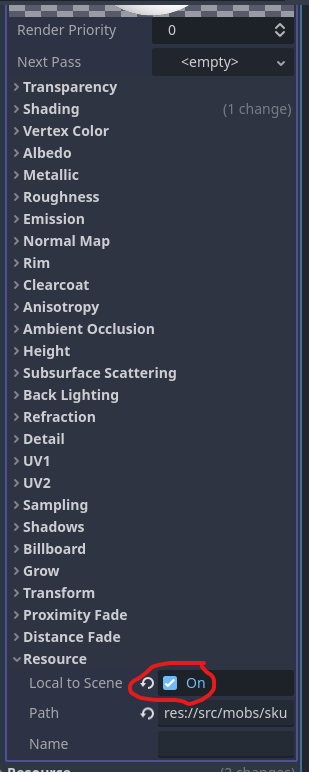Hello!
Im making a 3D game and trying to make an animation for enemies when they receive a hit.
This is my Enemy "Skull" scene setup

The animation changes the position of the Body mesh (not the entire enemy scene) so it "vibrates"
The animation also makes the albedo color of the mesh material switch back and forth from a red color so it "blinks".

The problem is when i attack a Skull the animations plays normally but all other Skulls also change color (but not position).
My guess is all Skulls share the same mesh instance, so changing its property will affect all Skull instances.
What could be a good fix for this problem? Should i make all instances of the mesh unique? Can i do that from code? Is there a better approach?






 And, based on your comments, it looks like in the real project it doesn't?
And, based on your comments, it looks like in the real project it doesn't?